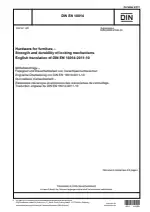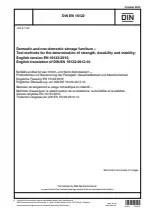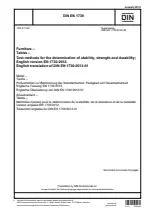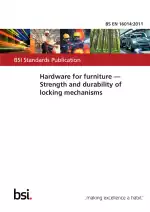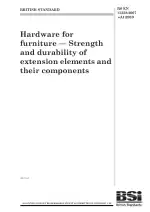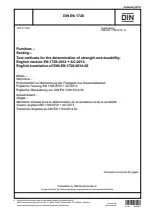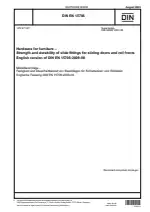Hardware for Furniture - Strength and Durability of Locking Mechanisms
Also Known As:
The test procedures and specifications for determining the sturdiness and longevity of locking mechanisms used in furniture are laid forth in the DIN EN 16014 standard. With the exception of latching mechanisms, the standard is applicable to all varieties of locking mechanisms and their parts in all application sectors. The testing required by this standard involves applying loads and forces that replicate both legitimate functioning and potential abuse.
It is crucial to remember that the tests outlined in this standard are not restricted to a particular set of materials, building methods, or manufacturing procedures. The sole focus is on assessing the robustness and longevity of the locking mechanisms and all of their parts, as well as the attachment elements like screws. The particle board used in these tests has certain features.
The outcomes of these tests should be used as a guide for how well furniture performs. They only apply to the particular locking systems and parts that were tested. However, the outcomes may be utilized as a representation of the model's performance if the tested model is reflective of the production model. Additionally, it is important to note that the standard does not address issues like corrosion, aging, and the impact of heat and humidity.
| Descriptors | Breaking strength, Capacitive loads, Closing hook, Closures, Continuity tests, Continuous load carrying ability, Corrosion tests, Definitions, Drawer slides, Durability, Evaluations, Fitness for purpose, Fittings, Furniture, Furniture accessories, Hardware, Latches, Loading, Locking devices, Locks, Mechanism, Office furniture, Performance tests, Permanent performance capability, Permanent stress, Proof loading, Properties, Specification (approval), Strength of materials, Testing, Testing conditions, Wood technology, Condensation, Fatigue tests |
| ICS Codes | 97.140 - Furniture |
| Language(s) | English |
| File Size | 706.6 KB |

